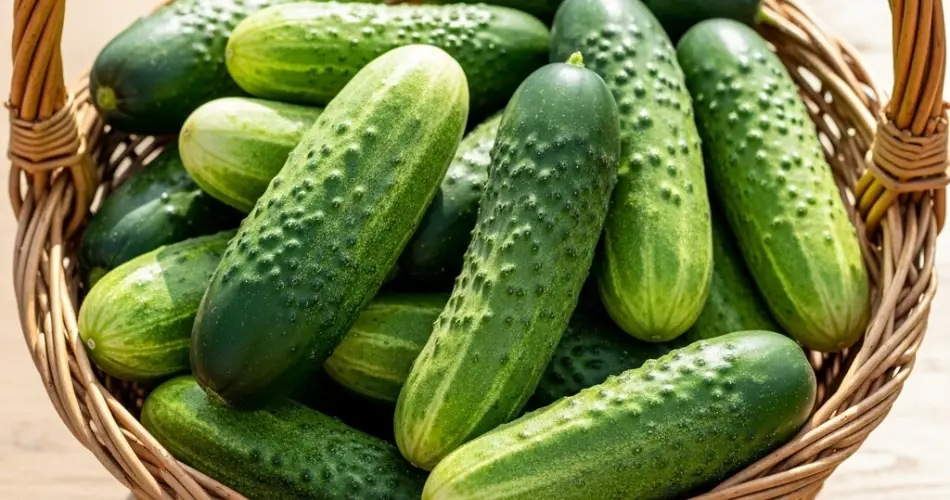Cucumbers are a staple in many home gardens due to their crisp flavor, versatility, and fast-growing nature. While traditionally grown outdoors in warmer months, it is entirely possible to cultivate cucumbers indoors and encourage vibrant blooms year-round with the right care and setup.
Developing cucumbers for continuous flowering requires attention to their environmental needs, proper feeding, and a commitment to their growth cycle. Here’s how to grow cucumbers indoors successfully and keep them blooming even outside their usual season.
1. Select the Right Cucumber Variety
The first step to indoor cucumber success is choosing the appropriate variety. Not all cucumber plants are suited for indoor environments.
Look for compact or bush varieties, such as ‘Bush Champion’, ‘Spacemaster’, or ‘Patio Snacker’. These types are bred specifically for container gardening and require less space while still producing abundant flowers and fruit.
Also, consider self-pollinating or parthenocarpic varieties, which don’t rely on insects to develop fruit. This makes them ideal for indoor growing, where pollinators are absent.
2. Provide Ample Light
Cucumbers are sun-loving plants that require at least 12–14 hours of bright light daily to bloom and grow properly. Indoors, this usually means using a grow light—especially in winter or in apartments with limited sunlight.
Use full-spectrum LED grow lights placed 6–12 inches above the plants. Adjustable timers help maintain consistent light exposure, which is crucial for promoting both leaf growth and flowering.
If you do have a sunny windowsill, a south-facing window can work—but supplemental lighting is usually needed for year-round blooms.
3. Maintain Optimal Temperature and Humidity
Cucumbers thrive in warm, slightly humid environments. Aim to keep the indoor temperature between 70–80°F (21–27°C) during the day and no lower than 60°F (16°C) at night.
Humidity levels around 50–70% support healthy flower development and reduce the risk of blossom drop. If your home is dry, especially during winter, consider using a humidifier or placing a shallow dish of water near your plants to increase ambient moisture.
4. Use Proper Containers and Soil
Growing cucumbers indoors requires roomy containers that allow for root expansion and drainage. Use pots that are at least 10–12 inches deep and wide, with multiple drainage holes.
The soil should be loose, nutrient-rich, and well-draining. A mix of potting soil, compost, and perlite or coco coir is ideal. This type of medium retains moisture without becoming waterlogged and supports healthy root development, which is key for continuous blooming.
5. Water Wisely
Cucumbers need consistent moisture, but overwatering can quickly lead to root problems. Check the soil regularly and water when the top inch feels dry.
Water deeply so that the entire root zone is moistened, and allow excess water to drain completely. Avoid letting the soil dry out completely or stay overly saturated, as both extremes can lead to dropped blooms or stunted growth.
6. Fertilize for Flowers
Cucumbers are heavy feeders, especially when grown in containers. To keep them blooming year-round, apply a balanced, water-soluble fertilizer every two weeks during active growth.
Once the plants begin flowering, switch to a fertilizer higher in phosphorus and potassium to support continuous blooming and fruit development. Look for N-P-K ratios like 5-10-10 or 3-6-4.
Organic options such as fish emulsion, seaweed extract, or compost tea also help promote healthy growth without overloading the plant with chemicals.
7. Support and Prune
Even compact cucumber varieties benefit from support. Use a small trellis, stakes, or netting to guide vertical growth. This not only saves space but also increases airflow around the plant, reducing the risk of disease and encouraging more blooms.
Prune off yellowing leaves and pinch back excessive side shoots to direct energy toward flowering and fruiting. Regular maintenance also helps keep the plant manageable and productive in tight spaces.
8. Encourage Pollination Indoors
If you’re growing a variety that requires pollination, you’ll need to hand-pollinate the flowers to ensure fruit production. Use a small, clean brush or cotton swab to transfer pollen from male flowers (with a thin stem) to female flowers (which have a tiny swelling beneath the bloom).
This process can be repeated daily during peak flowering to ensure high fruit yields.
Final Thoughts
With careful attention to light, temperature, feeding, and watering, you can grow cucumbers indoors and enjoy vibrant blooms—and even fresh fruit—all year long. While it requires more commitment than a typical houseplant, the reward of harvesting homegrown cucumbers in any season is well worth the effort.
Whether you’re gardening on a balcony, windowsill, or kitchen counter, indoor cucumber cultivation proves that space and climate don’t have to limit your green thumb.



